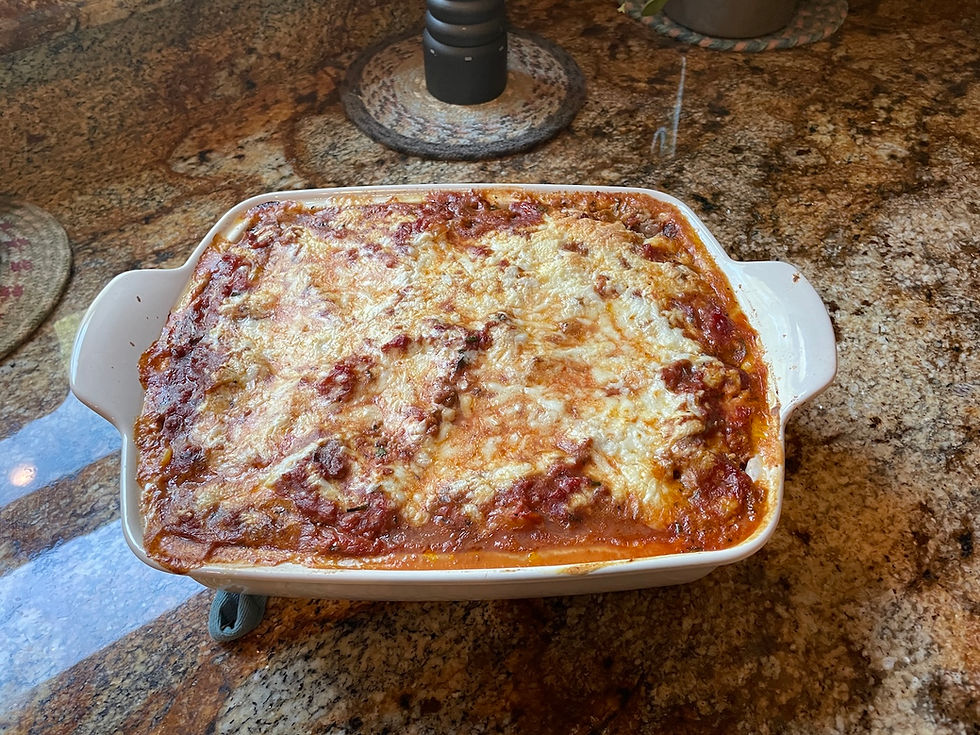The Pastie
- Debra

- Jan 2, 2019
- 3 min read
Updated: Apr 23
January 2019

Rainy Day Repast: The Pastie I used to call this culinary creation The Paste-ee, not Past-ee, to tease my husband. This recipe is one that I found in a newspaper, long ago. It is the Cornish pastie, and it is a cultural treasure of the Cornish people. The history of the pastie goes back to the days of mining in Cornwall, England. Each miner would carry his pastie in a lunchbox, a metal pail that had a space specifically designed for this meat-and-potato pie. The miner would heat the metal pail with his mining lamp, thereby reheating his meat-pie. Practicality was built into the pastie!

Dear Husband hails from Nevada City, California, a town close to Grass Valley, site of the historic Empire Mine. During his youth, Dear Husband would buy a pastie from a shop in Grass Valley, sometimes to take with him as lunch to University. In those days, he drove from this place called Nevada City to Sacramento to attend college classes. I was enduring my final class in this university when we chanced to meet in a course called The Ancient Near East. I told him that I thought it was a long way for him to travel to go to college, in California, all the way from Nevada.

Of course, I then learned that Nevada City is in Nevada County, which is located in California. In the real foothills. And that town is the county seat of a county that is shaped like a derringer. Those factoids later entered the realm of my fiction in NORTHSTAR. And the pastie soon entered my cooking life as a wife. I’ve changed the recipe just a hair over the years, replacing the Crisco with half-Crisco and half-butter. I used to peel the Yukon gold potatoes but now I don’t. I prefer the rustic unpeeled quality of this luscious potato.

A dear friend and work associate came to California from the snowy land of the Upper Peninsula of Michigan. There Cornish miners had brought the pastie into the regional cookbook. He fell in love with my version of this traditional meat pie. I used to cook one for him every winter. He especially liked the fact that I refused to add such atrocities as carrots or peas. My Cornish pastie is quite traditional and quite tasty. It’s a tasty pastie! And it is pronounced pas-tee.

The pastry portion of this recipe requires patience and the light touch of an artisan. The clean-up is a lot of work, but the labor is worth it. Some people eat the pastie with malt vinegar, others with ketchup. I prefer ketchup.
Good eats is a warm pastie with a cup of coffee on a cold winter day, especially on a rain-soaked, chilly day. This type of weather can, and just did, overtake northern northern California for almost a week in mid-January. And my pasties made the cold, wet day — sunny!

Pasties 4 cups flour 1 tsp salt 1/2 cup shortening and 1/2 cup butter 1-1/2 lbs beef (sirloin) 1/4 cup parsley 1 large chopped onion 2-3 chopped Yukon Gold potatoes Cold water Pats of butter Milk
Sift together flour and salt. Cut in Crisco and butter till mixture is crumbly. Add, one tablespoon at a time, enough cold water until the dough is easy to form into a ball. Chill.

Mix together the filling ingredients. Roll out a portion of the dough into a semi-circle. Place filling in the middle; add a pat of butter. Fold dough over. Cut away excess dough on ends, then seal the edges with milk. Place each pastie on a cookie sheet lined with parchment paper. Bake at 425 degrees F for 10 minutes, then reduce the heat to 350 degrees F. Bake for an hour or till the pastie is lightly browned. Adjust the ingredients in the filling to suit your taste, i.e., more potatoes, more parsley, less onion. Makes 4-6 pasties, depending on the size of each one.



